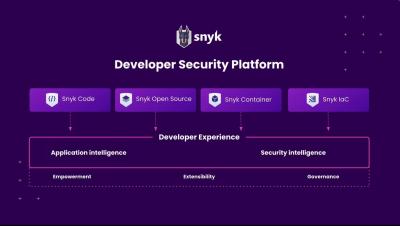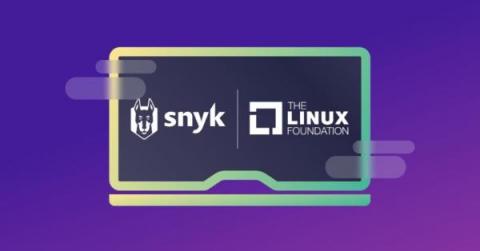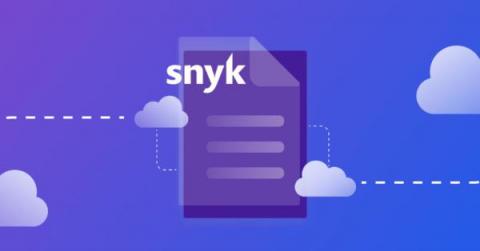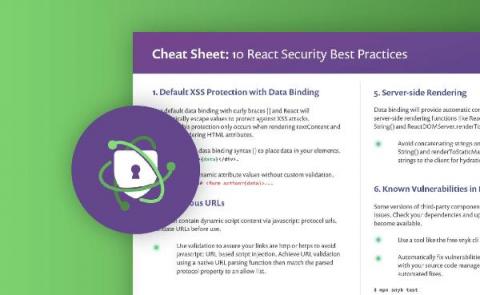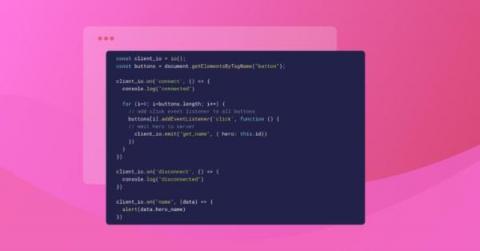Security | Threat Detection | Cyberattacks | DevSecOps | Compliance
July 2022
Stranger Danger: Your JavaScript Attack Surface Just Got Bigger
Buffer overflow attacks in C++: A hands-on guide
A buffer overflow is a type of runtime error that allows a program to write past the end of a buffer or array — hence the name overflow — and corrupt adjacent memory. Like most bugs, a buffer overflow doesn’t manifest at every program execution. Instead, the vulnerability is triggered under certain circumstances, such as unexpected user input.
Snyk Unveils Snyk Cloud, the Industry's First Developer-Centric Cloud Security Solution
Snyk Demo in 20 Minutes | 2022
Best practices for your first 30 days with Snyk
This post is applicable to Business plan and Enterprise plan customers. Adopting a new platform can seem intimidating, but with Snyk it doesn’t have to be. We have three tips to help you roll out Snyk, and have a seamless and successful first 30 days across your business or enterprise. Before you start inviting team members and importing projects, you’ll want to consider your account strategy, set up single sign-on (SSO), and configure your first organization.
Webinar recap: Snyk and the new era of software security
Snyk’s Senior Product Marketing Manager, Frank Fischer, recently hosted a webinar about the value in using a developer security platform to secure code, dependencies, containers, and infrastructure as code (IaC). During this talk, Fischer discussed the shift in software security that has occurred over the past decade, the need for developers to take part in the security process, and the value of Snyk in securing the entire development lifecycle.
Addressing cybersecurity challenges in open source software with the Linux Foundation
Snyk recently partnered with the Linux Foundation to produce a report focusing on the state of security in the open source software (OSS) space. The report was based on 550+ survey responses and 15 interviews with OSS maintenance and cybersecurity experts. Following the report’s publication, experts from Snyk held a webinar with the Linux Foundation to discuss some of the key insights.
Application Security 101 - What you need to know in 8 minutes
Webinar recap: The missing story with every cloud breach
Snyk’s Chief Architect, Josh Stella, recently hosted a webinar about cloud security. Stella was the co-founder and CEO of Fugue, a cloud security and compliance company that was acquired by Snyk. With the capabilities of Fugue, Snyk will bring its developer-first security platform into the cloud security space. During this talk, Stella discussed the missing story in every cloud breach: the tale of how, when, and where attackers operate in the cloud.
Top 5 tips for C++ security
C++ has become a pivotal part of the modern day tech industry. It has been used for multiple purposes, such as desktop applications, server applications, gaming, virtual reality, internet of things firmware, and even as the foundation for many modern day programming languages. Since the initial C++ release in 1985, as an extension to the C programming language, it was designed with an orientation towards system programming and embedded resource development.
10 React security best practices
The date on this post reflects its latest update. This post was originally published on October 28, 2020. Looking for the best ways to secure your React app? Then you’ve come to the right place! We’ve created this checklist of React security best practices to help you and your team find and fix security issues in your React applications. We’ll also show you how to automatically test your React code for security-related issues and automatically fix them. Let’s get to it!
Improving developer experience with security tools at Pinterest
Using open source libraries securely is an ongoing priority at large organizations. One big challenge is integrating security tools into the developer workflow — and setting up a system that prioritizes vulnerability fixes — without overwhelming developers. But what does a successful approach look like?
The security course missing from higher education
Have you ever looked at the curriculum offered in a Computer Science program? Across many different universities, there are some commonalities among the courses students take. Generally, there’s an introductory course in the first semester that introduces students to the world of computer science. Then over the course of subsequent semesters, students take courses about programming (including an introduction to OOP), databases, data structures, etc.
Exploring CVE-2022-33980: the Apache Commons configuration RCE vulnerability
Before we dive into the details of this vulnerability, we want to make it clear that there’s no need for panic. Many systems permit the use of various types of code in configuration files, and there are legitimate use cases to include string and variable interpolation in the configuration of applications and systems. This is not Log4Shell all over again. This is simple configuration manipulation.
Snyk Live : Legal Side of Open Source Use with Yos Pang
Best practices for creating secure webhooks
Webhooks are one of the best ways to transfer information about occasional events from one system to another. In contrast to methods like HTTP polling — which involves the client repeatedly asking for information from the server — webhooks are triggered by events. This makes them simple and effective. A client can subscribe to a webhook to send a message to an endpoint whenever a specific event happens.
How to build a secure WebSocket server in Python
Typically, when a web app needs something from an external server, the client sends a request to that server, the server responds, and the connection is subsequently closed. Consider a web app that shows stock prices. The client must repeatedly request updated prices from the server to provide the latest prices.






